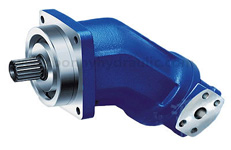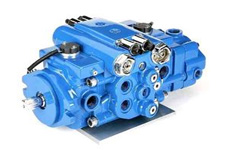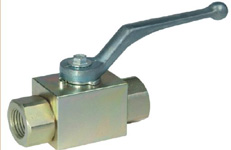Pascal's Law
Pascal’s law, or the principle of transmission of
fluid-pressure, is a principle in fluid mechanics
that states that: pressure exerted anywhere in a
confined incompressible fluid is transmitted equally
in all directions throughout the fluid such that the
pressure ratio (initial difference) remains the
same. The law was established by French
mathematician, Blaise Pascal.
Pascal’s
principle is defined as:
A change in pressure
at any point in an enclosed fluid at rest is
transmitted undiminished to all points in the fluid
This principle is stated mathematically as:
Pascal's Law
where:
Pascal's Law 2
is the hydrostatic pressure (given in pascals in the
SI system), or the difference in pressure at two
points within a fluid column, due to the weight of
the fluid;
ρ is the fluid density (in
kilograms per cubic meter in the SI system);
g is acceleration due to gravity (normally using the
sea level acceleration due to Earth’s gravity in
metres per second squared);
Pascal's Law 3 is
the height of fluid above the point of measurement,
or the difference in elevation between the two
points within the fluid column (in metres in SI).
The explanation of this formula is that the
change in pressure between two elevations is due to
the weight of the fluid between the elevations. Note
that the variation with height does not depend on
any additional pressures. Therefore Pascal’s law can
be interpreted as saying that any change in pressure
applied at any given point of the fluid is
transmitted undiminished throughout the fluid.
Pascal’s principle applies to all fluids,
whether gases or liquids and underpins the operation
of hydraulics, e.g. the hydraulic press.
A
hydraulic press is a machine that uses a hydraulic
cylinder to generate a compressive force. It uses
the hydraulic equivalent of a mechanical lever, and
was also known as a Bramah press after the English
inventor, Joseph Bramah. He invented and was issued
a patent on this press in 1795.
The hydraulic
press depends on Pascal’s principle above: the
pressure throughout a closed system is constant. One
part of the system is a piston acting as a pump,
with a modest mechanical force acting on a small
cross-sectional area; the other part is a piston
with a larger area which generates a correspondingly
large mechanical force. Only small-diameter tubing
(which resists pressure more easily) is needed if
the pump is separated from the press cylinder.
Pascal’s law: Pressure on a confined fluid is
transmitted undiminished and acts with equal force
on equal areas and at 90 degrees to the container
wall.
A fluid, such as oil, is displaced when
either piston is pushed inward. The small piston,
for a given distance of movement, displaces a
smaller amount of volume than the large piston,
which is proportional to the ratio of areas of the
heads of the pistons. Therefore, the small piston
must be moved a large distance to get the large
piston to move significantly. The distance the large
piston will move is the distance that the small
piston is moved divided by the ratio of the areas of
the heads of the pistons. This is how energy, in the
form of work in this case, is conserved and the Law
of Conservation of Energy is satisfied. Work is
force times distance, and since the force is
increased on the larger piston, the distance the
force is applied over must be decreased.
The
pressurized fluid used, if not generated locally by
a hand or mechanically-powered pump, can be obtained
by opening a valve which is connected to a hydraulic
accumulator or a continuously-running pump whose
pressure is regulated by a relief valve. When more
force needs to be generated than the available
pressure would allow, or there is a need to use
smaller, higher-pressure cylinders to save size and
weight, a hydraulic intensifier can be used to
increase the pressure acting on the press cylinder.
When the pressure on the press cylinder is
released (the fluid returning to a reservoir), the
force created in the press is reduced to a low value
(which depends on the friction of the cylinder’s
seals. The main piston does not retract to its
original position unless an additional mechanism is
employed.























